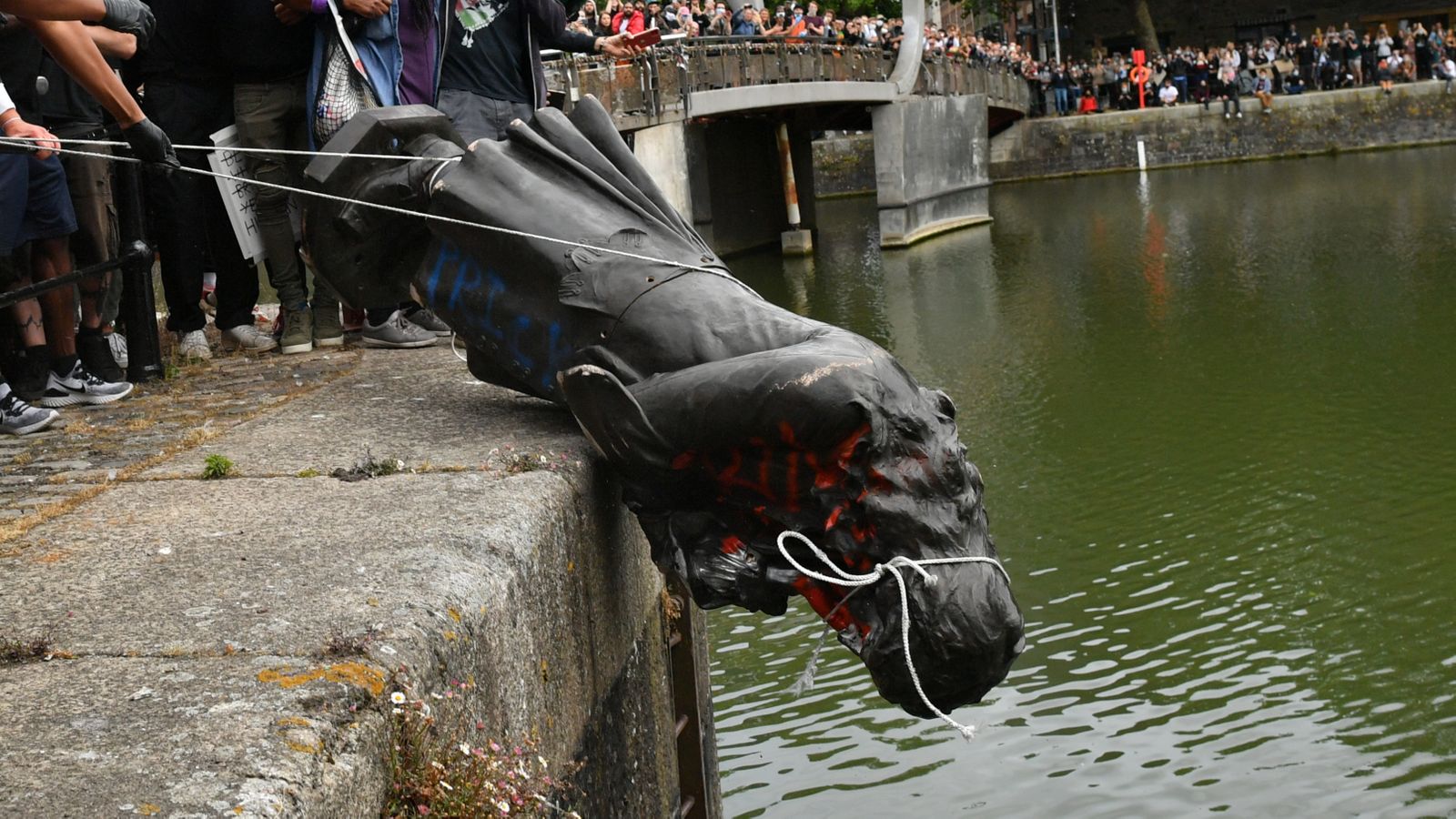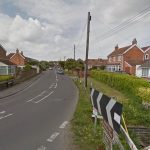A quarter of contentious statues have been removed, will be removed or are under review since the Edward Colston monument was toppled last year, according to Sky News research.
Reviewing the statues includes consulting members of the public and gathering views from panellists from across art and culture.
Sky News contacted 44 councils in England, Wales and Scotland who share 84 controversial statues between them. All have been condemned for their ties to slavery and colonialism.
Of the 84 statues, 21 have been removed, are due to be removed or are under review since the statue of slave trader Colston was pulled down in Bristol last year.
Since the public toppling, a statue of slave dealer Robert Milligan was taken down by the local authority in the London Docklands – and the University of East London removed a statue of merchant and slave trader Sir John Cass.
It is now reviewing whether to drop his name from one of the campus buildings, whilst institutions like City University London have already dropped his name from one of theirs.
Cardiff Council has also voted to remove the statue of slaver and Waterloo war hero Sir Thomas Picton from the City Hall, but is waiting on the Welsh government for final approval.
There are 18 statues across the three nations under review. Most are in Scotland’s biggest cities, Glasgow and Edinburgh.
In Edinburgh, there are no immediate plans to remove any statues or monuments – but a slavery and colonialism legacy review group has been set up to discuss the future of all monuments, plaques and road names in the city.
The volunteers in the group, who all have backgrounds or a keen interest in public art and history, will conduct a public consultation and present their findings to the city council.
Among the monuments they will review and discuss are Scottish politician Henry Dundas, who “delayed the abolition of the slave trade to benefit slavers”, according to Sir Geoff Palmer, who will chair the advisory group.
A similar group is in motion in Glasgow, one of the UK’s first cities to commission a study to assess its links to slavery and colonialism.
Glasgow’s review into statues and place names was already under way before the controversy began last year.
Members of the public there will be consulted on the future of statues in their city, such as 19th century military leader Field Marshal Frederick Roberts, who is accused of helping to set up concentration camps, and Sir John Moore, who participated in both the Royal African and East India Companies.
Sky News heard from some of the councils who have kept their statues in place and have no plans to review their future.
In Plymouth, statues that have been deemed controversial have stayed put, but an additional slavery memorial has been installed to acknowledge the city’s historic role in the transatlantic slave trade.
Some like Tavistock Town Council have kept their monument of Sir Francis Drake, but plans to install an information board next to the statue outlining the explorer’s links to slavery are being explored.
Carmarthenshire County Council will likewise place information boards near the Sir Thomas Picton monument in Carmarthen with reference to Sir Thomas’s military career as well as his links with slavery.
In London, a commission comprising 15 members will assess the art on the capital’s streets. They will advise on better ways to raise public understanding behind the statues, street names, building names and memorials.
One member of the newly-formed commission has told Sky News their existence is not being established to preside over the removal of statues but rather add context to their history.
Curator and art historian Aindrea Emelife, who is the youngest person on the commission board, told Sky News: “Humanity and history is going at such a fast pace that it almost needs to be reconsidered and changed a lot.
“What is important back then, is still important now but there are new ideas, new debates which are coming to the fore which need to be seen in the public realm daily.”
When pressed on the statue of Sir Winston Churchill in Westminster, which last year was vandalised by demonstrators at one of the Black Lives Matter protests, Ms Emelife says the former prime minister’s presence encourages questions and debate.
“I don’t think it should be taken down at all,” says the art historian.
“I think it’s an important figure to see in the public realm but should it have a more complete history. For example, should we have another monument that shows other aspects of Churchill, should we have other monuments that create a more 360 view of characters.
“We should be looking at our world and thinking should we be adding other characters or other perspectives, whether that’s a counter monument or more plaques as to what Churchill did.”






















